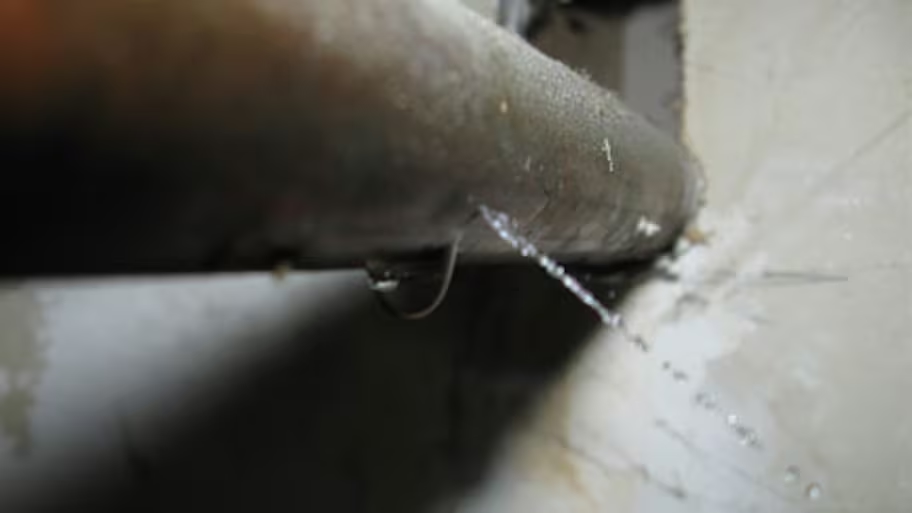Everybody seems to have their personal perception when it comes to Most Common Causes of Leaky Pipes.

Leakages not just create waste of water yet can additionally trigger unneeded damage to your house as well as promote unwanted organic growth. Water leakages could go undetected considering that most of the pipework in our home is hidden. By looking as well as understanding for day-to-day scenarios that trigger leaks, you can shield your residence from future leaks and unnecessary damages. Today, we will look at 6 leakage causes that might be triggering your pipes to trickle.
Immediate temperature level changes.
Extreme temperature adjustments in our pipes can create them to expand as well as get suddenly. This development and contraction might create cracks in the pipelines, specifically if the temperature are below cold.
Corroded water systems
As time goes by, your plumbing system ages and rust such as corrosion may start gnawing the pipelines. This might be the reason for staining or bending on your pipes. This calls for an examination with your plumber promptly. If our plumbing system is old, consider replacing the pipelines given that they go to a higher danger of rust than the more recent versions.
Malfunctioning Pipeline Joints
The factor at which your pipelines attach is frequently the weakest link in the waterline. Pipe joints can deteriorate in time, leading to water leakages. The bulk of pipeline joints are not quickly noticeable. If you have loud pipes that make ticking or banging noises, especially when the hot water is turned on, your pipe joints are possibly under a great deal of stress. It is a good idea to have your plumber check your system yearly.
Intruding roots
Many water leakages begin outside the house instead than inside it. You might see damp patches or sinkholes in your backyard, as well as that might suggest that tree roots are invading water lines creating water to permeate out.
Poor Water Connectors
At times, a leak can be brought on by loose pipes and pipelines that supply your devices. Most of the time, changing is what triggers the loosened water Connections. You could discover in the case of a cleaning machine, a pipe may spring a leakage due to drinking during the spin cycle. In case of a water links leakage, you may observe water running directly from the supply line or pools around your devices.
Obstructed Drains
Blocked drains pipes might be aggravating and inconveniencing, however they can occasionally end up creating an overflow leading to rupture pipelines. Keep removing any type of products that may decrease your drains pipes that can clog them to prevent such aggravations.
All the above are reasons for leaks yet not all water leakages result from plumbing leaks; some leakages could originate from roofing system leaks. All leakages must be fixed immediately to prevent water damages.
Leakages not just create waste of water but can also trigger unneeded damages to your residence and also promote undesirable natural development. By recognizing and looking for everyday scenarios that create leaks, you can protect your house from future leaks as well as unnecessary damage. Today, we will look at six leak triggers that might be creating your pipelines to trickle.
At times, a leakage can be created by loose hoses and pipes that supply your appliances. In case of a water connections leak, you might observe water running straight from the supply line or puddles around your home appliances.
How To Check For Water Leak In Your Home
How To Check for Leaks
The average household's leaks can account for nearly 10,000 gallons of water wasted every year and ten percent of homes have leaks that waste 90 gallons or more per day. Common types of leaks found in the home are worn toilet flappers, dripping faucets, and other leaking valves. These types of leaks are often easy to fix, requiring only a few tools and hardware that can pay for themselves in water savings. Fixing easily corrected household water leaks can save homeowners about 10 percent on their water bills.
To check for leaks in your home, you first need to determine whether you're wasting water and then identify the source of the leak. Here are some tips for finding leaks:
Take a look at your water usage during a colder month, such as January or February. If a family of four exceeds 12,000 gallons per month, there are serious leaks.
Check your water meter before and after a two-hour period when no water is being used. If the meter changes at all, you probably have a leak.
Identify toilet leaks by placing a drop of food coloring in the toilet tank. If any color shows up in the bowl after 10 minutes, you have a leak. (Be sure to flush immediately after the experiment to avoid staining the tank.)
Examine faucet gaskets and pipe fittings for any water on the outside of the pipe to check for surface leaks.
Undetected water leaks can happen without the home or business owner even realizing. If you suspect a water leak, but not able to find the source. It is time to contact a professional water leak detection service, The Leak Doctor.
How To Find a Water Leak In Your Home
https://www.leakdoctor.com/blog/How-To-Check-For-Water-Leak-In-Your-Home_AE197.html

Hopefully you liked our part on How to detect water leaks in your home. Thank you so much for finding the time to read our posting. Liked our content? Please share it. Let other people discover it. Thank-you for going through it.
More Details